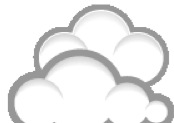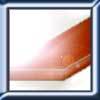Skip over navigation
Imagine a 3 by 3 by 3 cube made from 27 smaller cubes.
Perhaps it's here - but behind this cloud!

It's hanging in the air in front of you so you can just see one face of it and that face has been painted red
1. How many small cubes have just two of their faces painted?
2. Where are they?
3. What are the two colours on each of those small cubes that have two faces painted?
Now you could try the same things with a larger starting cube, that is 4 by 4 by 4, and answer the same three questions.
If you'd like to take these ideas a bit further, have a look at Painted Cube .

Or search by topic
Number and algebra
Geometry and measure
Probability and statistics
Working mathematically
Advanced mathematics
For younger learners
Painted Faces
Age 7 to 11
Challenge Level 





This activity is all about
imagining, as you might do when you listen to a story or
poem.
There is no need to write or draw
anything
BUT
talking about it could be
good
SO
find a friend to do this
with!
Imagine a 3 by 3 by 3 cube made from 27 smaller cubes.
Perhaps it's here - but behind this cloud!

So, remove the cloud in your mind
and there it is!
It's hanging in the air in front of you so you can just see one face of it and that face has been painted red
The right-hand side face has been
painted yellow
The left-hand side face has been
painted blue
The top face has been painted
white
The underneath bottom face has
been painted black
The back face has been painted
green.
1. How many small cubes have just two of their faces painted?
2. Where are they?
3. What are the two colours on each of those small cubes that have two faces painted?
Now you could try the same things with a larger starting cube, that is 4 by 4 by 4, and answer the same three questions.
If you'd like to take these ideas a bit further, have a look at Painted Cube .
You may also like
Little Boxes
How many different cuboids can you make when you use four CDs or DVDs? How about using five, then six?

